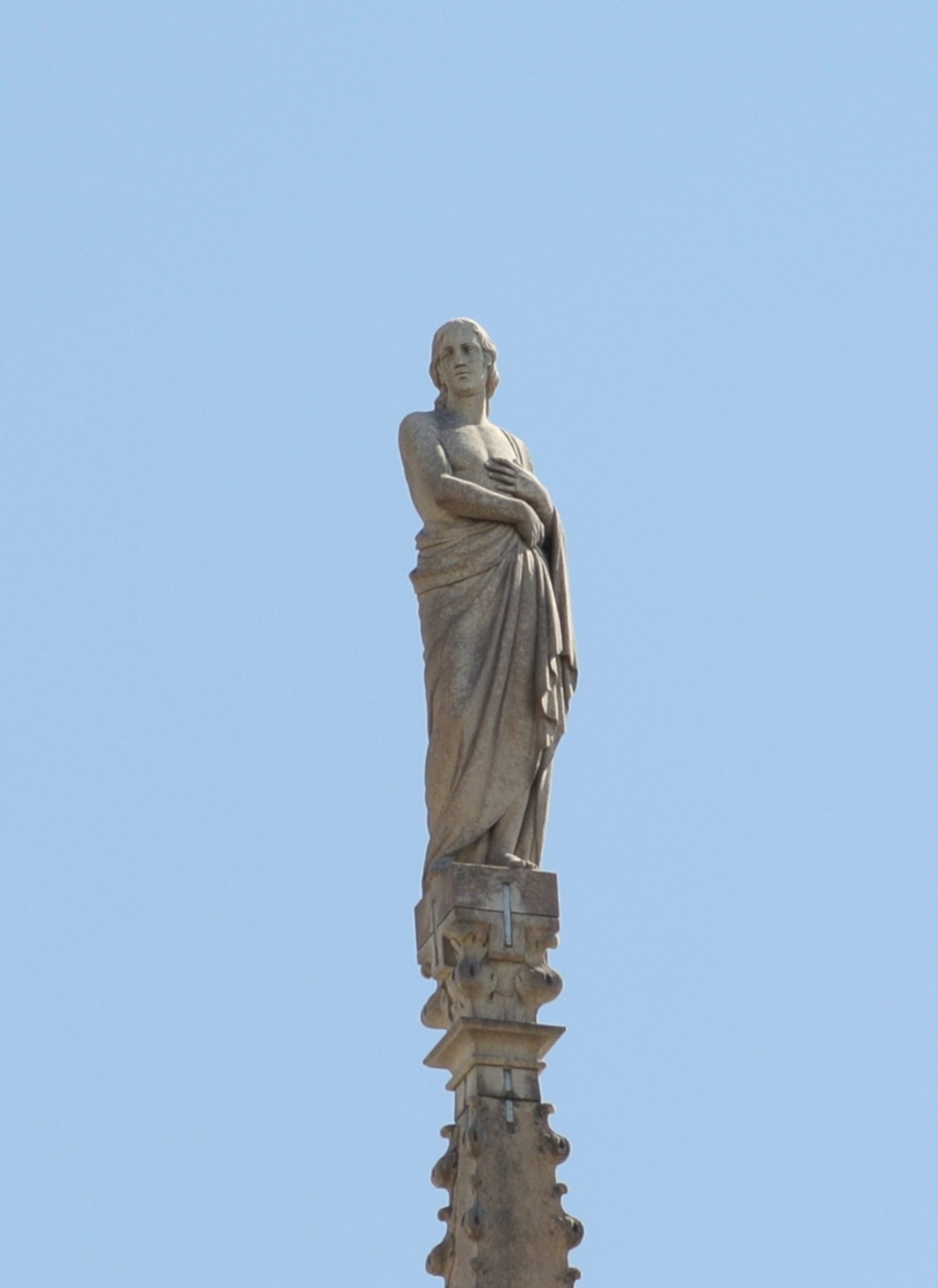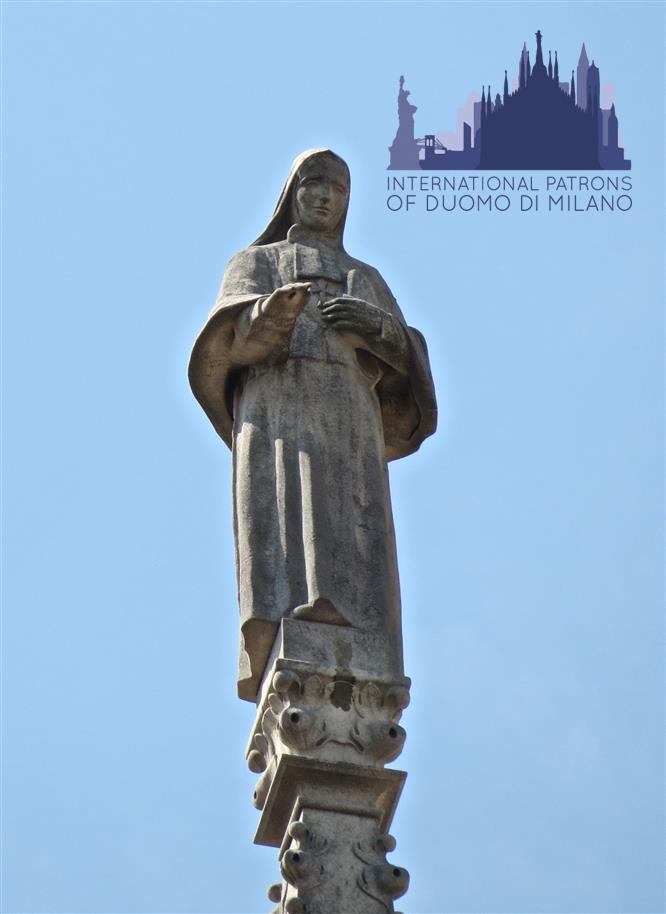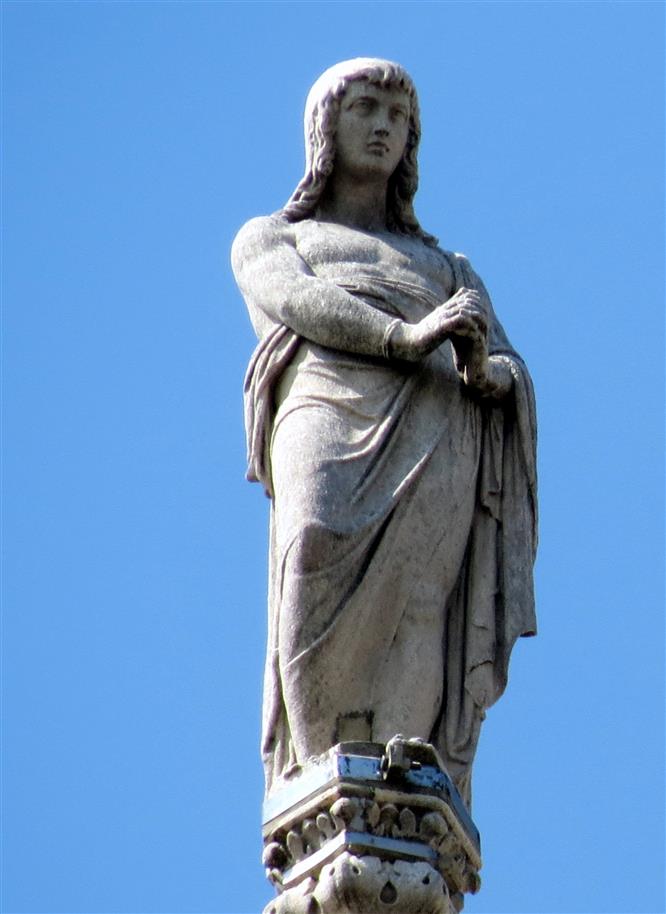Many saints of the Christian tradition are called Felix. Unlike the namesake statue placed on spire G64, this young San Felice is portrayed in the typical attire of those who suffered martyrdom at the time. Hence it could be St. Felix of Nucera Costantia who lived in the 1st century. Under Emperor Nero, he suffered martyrdom with his sister Constance at the site of the current Church of Purità, in Rome. It could even be one of the famous “Santi Sette Fratelli” (Seven Saint Brothers), sons of St. Felicity, whose Passio tells us about a rich Roman widow who was accused of Christian practices during the rule of Antoninus Pius (138-161 AD). She was initially questioned alone but did not yield. On the next day the prefect ordered the seven children to be brought before her (Felice, Januarius, Philip, Silanus, Alexander, Vitale and Martial). Due to their firm refusal to abjure their faith, they individually suffered martyrdom with various forms of torture. Or, if we prefer, we could think of our San Felice as the general representation of all those San Felices who were forced to an inglorious end for their courage to approach God, choosing to go against the atmosphere of terror and restriction that prevailed at the time. San Felice, along with the statues of martyrs who crowd the Duomo, teaches us not to give up when we face an obstacles or the forced conventions of our societies. He teaches us to believe in good and in what is right, without either accepting compromise or surrendering to impositions. St. Felix who crowns Spire G114 is a reproduction made in 1963. The original statue, made in the 1800s, is today in the marble workers’ site for safety and protection purposes. The saint is portrayed as a young man, with no footwear. The right leg is bent in the attitude of taking a step forward. The left arm is stretched forward and the right hand holds a drape of the tunic, which leaves his legs and chest bare.
ST. FELIX
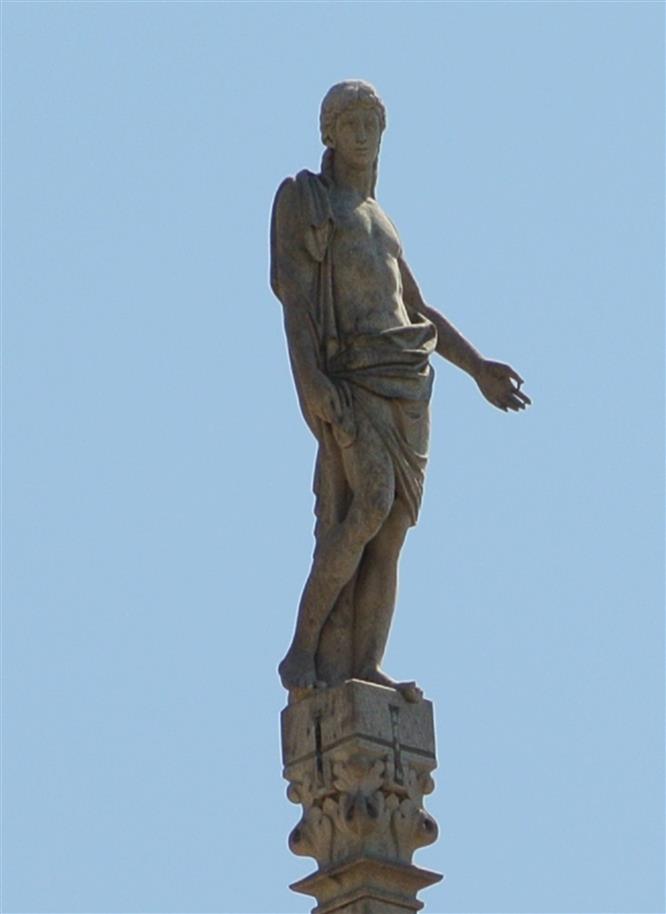
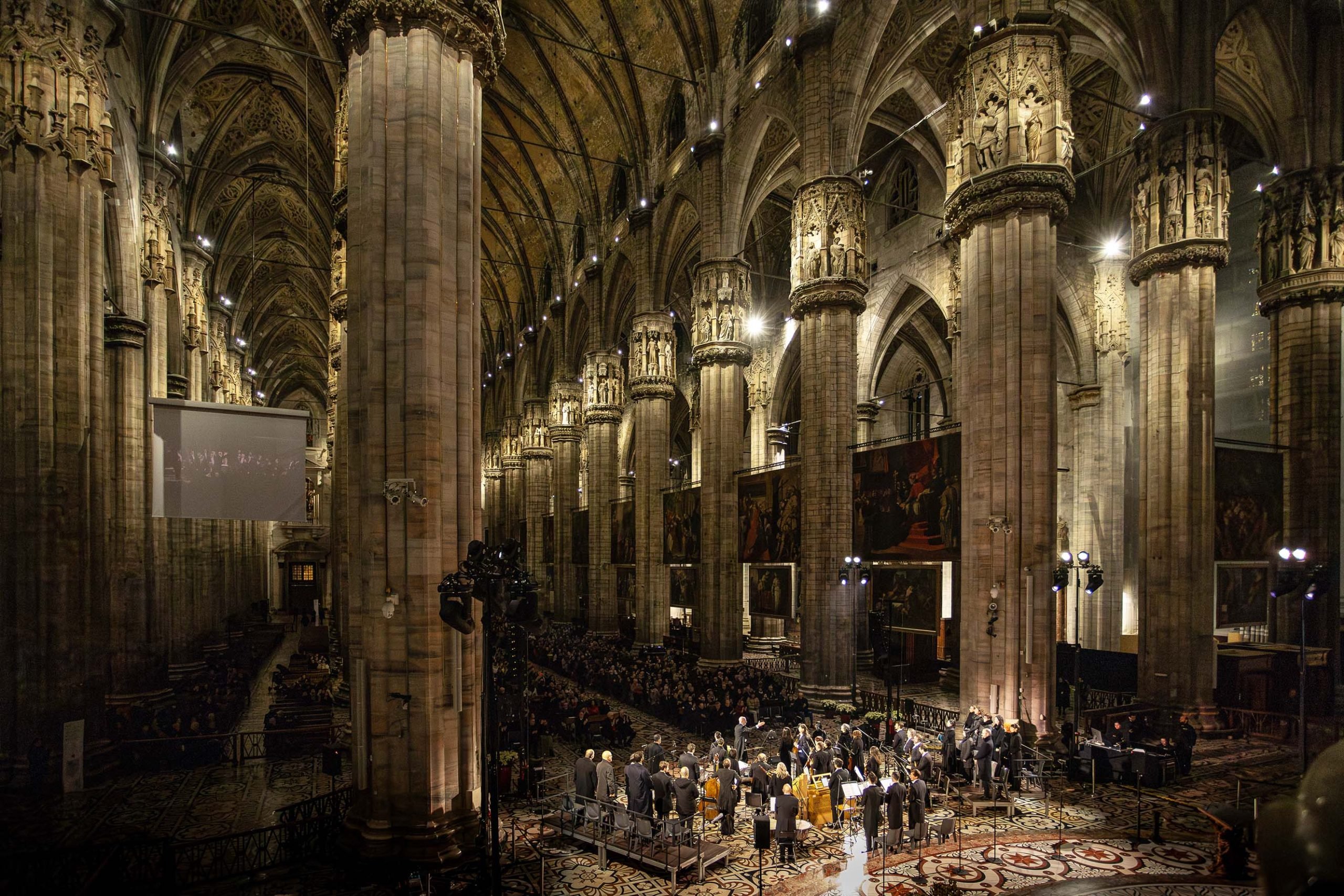
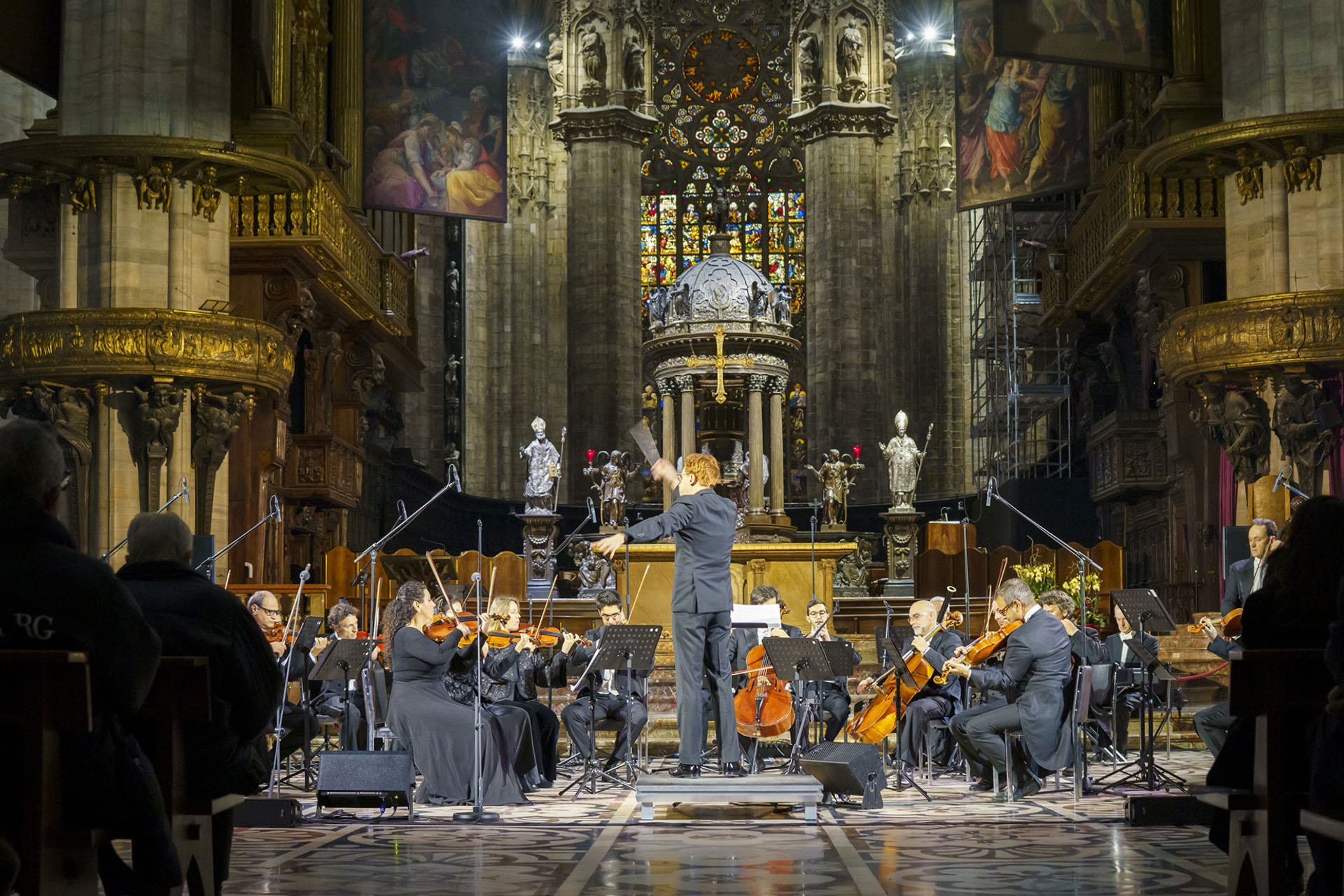
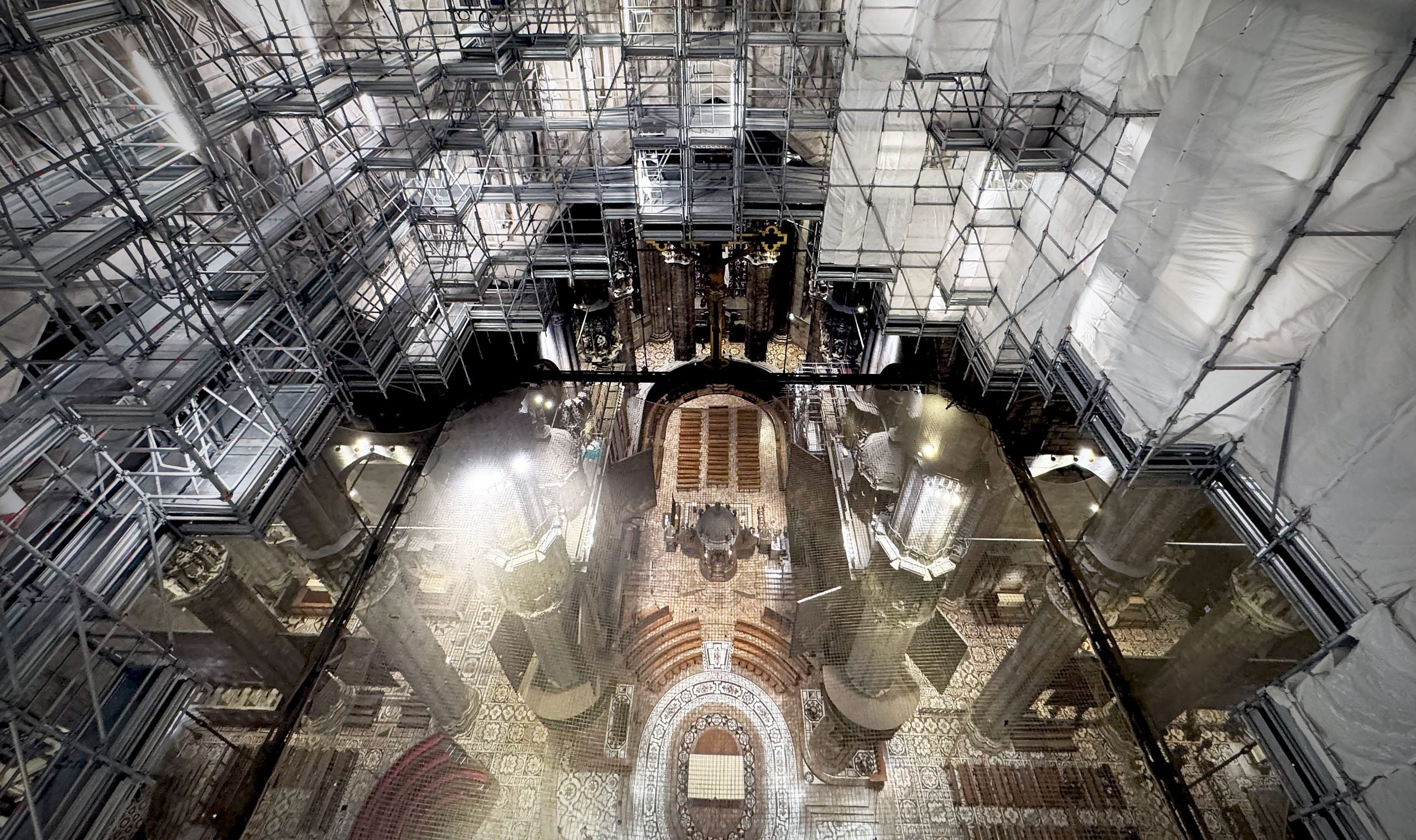
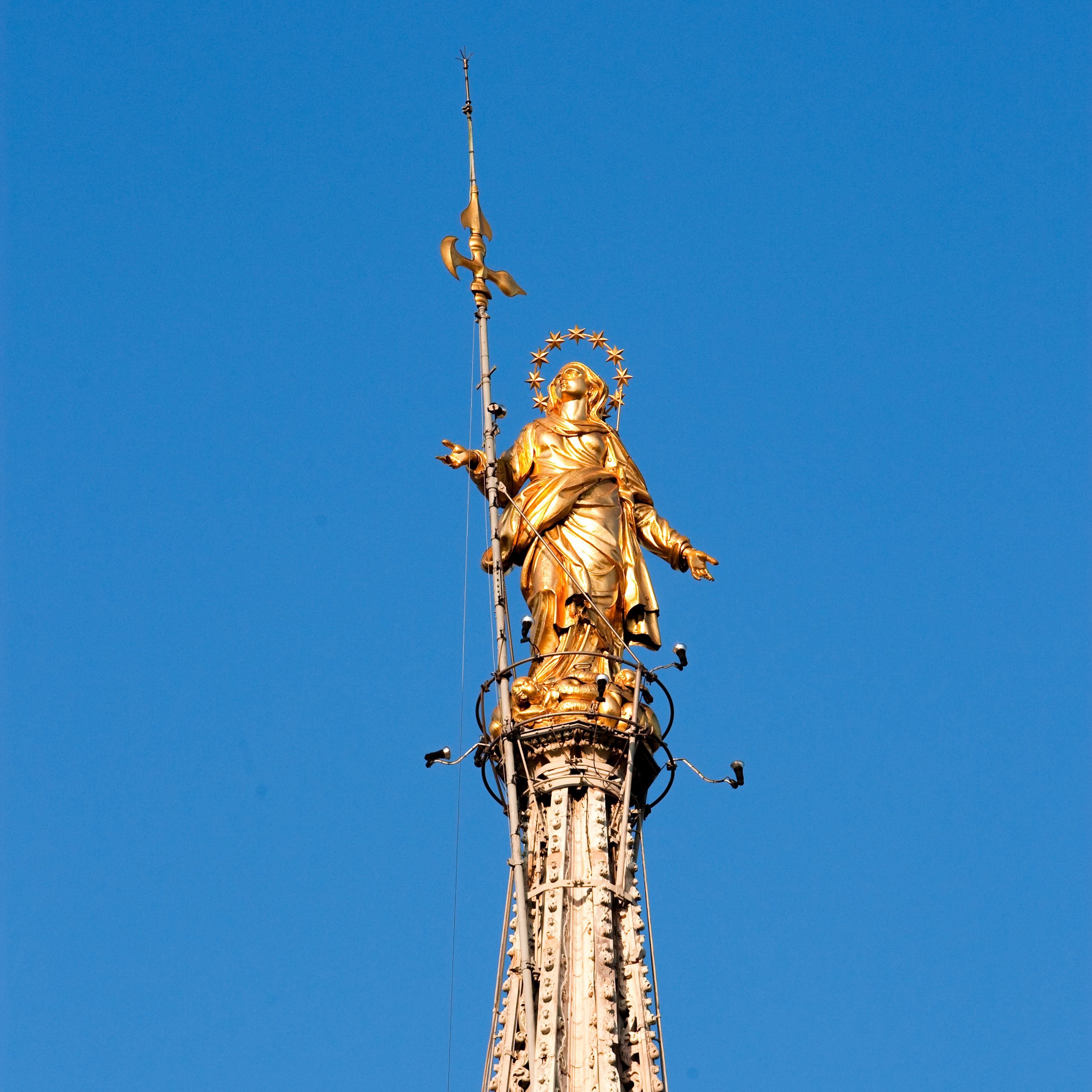
 Tiburio
Tiburio